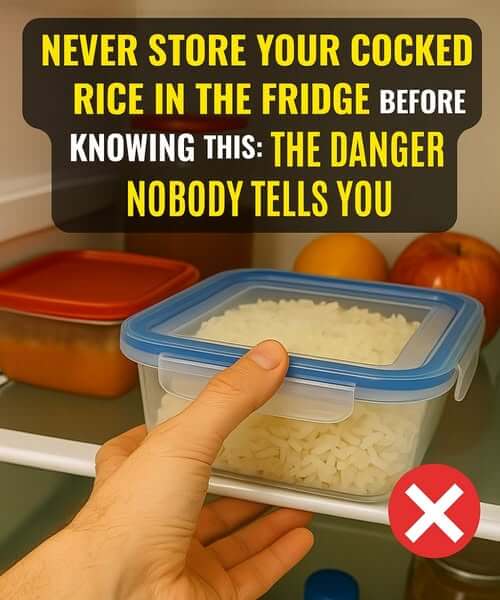Most people toss leftover rice into the fridge without a second thought. It’s a common habit: cook once, eat twice. But here’s the alarming truth—your chilled rice might still be dangerous, even if it looks and smells perfectly fine.
While it may seem harmless, leftover rice can become a breeding ground for harmful bacteria, and your refrigerator isn’t always enough to stop it. The real threat? A heat-resistant bacterium called Bacillus cereus—and it can survive cooking.
When you boil rice, any Bacillus cereus spores already present in the raw grains can make it through the cooking process. If the rice is left at room temperature too long before refrigerating—or if it cools down too slowly—those spores can multiply rapidly. Worse still, the toxins released by these bacteria aren’t destroyed by reheating, which means a quick microwave blast might not be enough to keep you safe.
Common symptoms of Bacillus cereus food poisoning include nausea, vomiting, and diarrhea. Illness often strikes within just 1 to 5 hours of eating the contaminated rice. While it’s typically not fatal, it can be severe and dangerous, especially for young children, seniors, or anyone with a weakened immune system.
How to Stay Safe When Storing and Reheating Rice:
1. Cool It Fast
After cooking, never leave rice out for more than 1 hour at room temperature. Spread it thin in a shallow dish or tray so it cools quickly before you refrigerate.
2. Store It Right
Use airtight containers and place rice in the coldest part of your fridge—not near the door where temperatures fluctuate. Avoid covering warm rice directly with a lid that traps steam and slows cooling.
3. Don’t Let It Sit Too Long
Even properly stored rice should be eaten within 1–2 days. If it’s been in the fridge longer than that, toss it—food poisoning isn’t worth the risk.
4. Reheat Once, Not Twice
Reheating rice more than once gives bacteria more time to grow. Only warm the portion you’ll eat and heat it thoroughly—at least 165°F (74°C)—to kill any active bacteria.
5. Don’t Rely on Smell or Sight
The toxins from Bacillus cereus are odorless, colorless, and invisible. Just because rice looks fine doesn’t mean it’s safe to eat.
Your fridge is a tool, not a failsafe. It may slow bacteria growth, but it doesn’t kill bacteria or destroy the toxins they’ve already released. That’s why how you cool and store rice is just as critical as how you reheat it.
Leftover rice is one of the most overlooked food safety hazards in the average kitchen. With the wrong storage habits, your convenient meal prep can quickly become a health risk.
Bottom line: Cool it quickly, store it smart, reheat once, and never take chances with rice. Your stomach will thank you.
